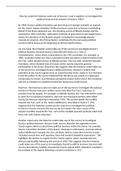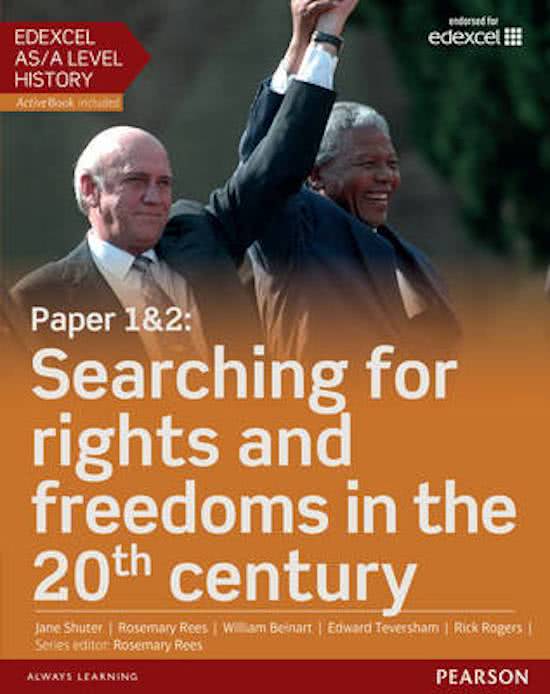Natalie
‘How far could the historian make use of Sources 1 and 2 together to investigate the
political tensions that existed in Russia in 1906?’
By 1906, Russia’s political situation was becoming increasingly unstable, as support
for the Tsarist regime dwindled. Political tensions arose due to Russia’s humiliating
defeat in the Russo-Japanese war, the shocking events of Bloody Sunday and the
subsequent 1905 revolution. Alternative methods of government were beginning to
attract the attention of the Russian people, including the increasingly popular
concept of socialism. All of these factors contributed to the increasing political
tensions within Russia at the beginning of the twentieth century.
On one hand, the historian could make use of the sources to investigate Russia’s
political tensions, because Source 2 describes the Duma as a ‘nest of
revolutionaries’, which draws connections to the 1905 revolution. For example, in
1905, revolution broke out when a peaceful protest provoked a violent reaction from
the Tsar, which became known as Bloody Sunday. The Tsar later issued the October
Manifesto, which dictated that all classes within society would be granted
participation in the Duma. Therefore this suggests that the historian could make use
of the sources to investigate Russia’s political tensions, because it implies that
members of the Tsarist regime (such as Grand Duchess Xenia, sister to Tsar Nicholas
II and the author of the source) believed that the Duma was simply an unpleasant
compromise to ensure Tsar Nicholas maintained control at the end of the revolution,
and not an initiative to establish worthwhile democracy within Russia.
However, the historian could not make use of the sources to investigate the political
tensions in Russia is because neither source describes the Tsar’s responses to
protests from his people. For example, on Bloody Sunday, the Tsar ordered the army
to open fire on peaceful protesters, and over one thousand workers were killed
during the Moscow Uprising in November 1905. This would explain the hostility
towards the Tsar, such as the ‘sullen indifference’ described in Source 1. This
suggests that the historian cannot use the sources to investigate the political
tensions in Russia, because the sources do not explain the clear causes of the
people’s hostility towards the Tsar, such as the multiple peaceful protests which had
been met with violent responses.
Another reason why the historian could make use of the sources to investigate
Russia’s political tensions, because both sources describe the opposition to the
Tsarist regime which created these political tensions within the Duma. For example,
Source 1 describes members of the Duma ‘showing no enthusiasm, and even almost
sullen indifference’ towards the Tsar. Similarly, Source 2 describes how the crowd
‘included several men with repulsive faces and insolent disdainful expressions’. This
highlights the decline in support for the Tsarist regime, which transformed into
distrust and hostility following the events of 1905. This suggests that the historian
could make use of the sources to investigate Russia’s political tensions, because both
sources describe the hostility towards the Tsarist regime which ultimately resulted in
the collapse of the regime following a second revolution in 1917.






